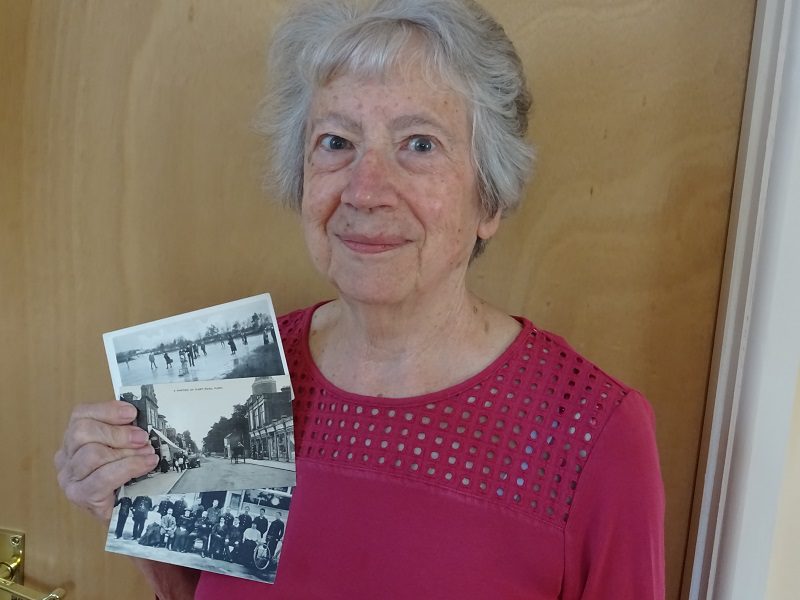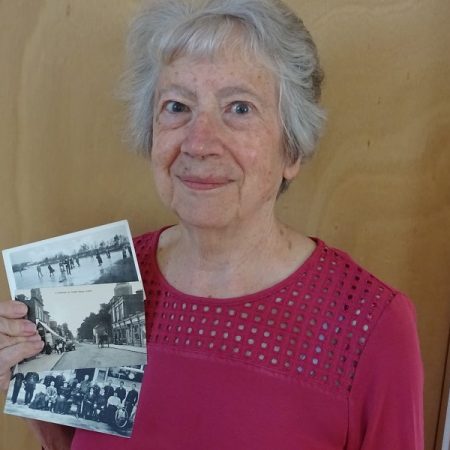Lack of money should be no barrier to researching the past
THERE are probably more unfinished books on local and family history than any other subject. Add to these the piles of unsorted papers, unidentified photographs and the projects that were never followed up and you have an encyclopaedia of unfulfilment.
One of the problems, of course, is lack of time. But this excuse has been weakened by the lockdown. Another reason is that “more research is needed”. This may be true, but most projects have to be brought to an end in the knowledge that they will never be 100 per cent complete.
The most laudable reason for not finishing is “lack of funds”. Often, to take a project to its end there are printer’s bills, computer costs, perhaps some assistance from professionals. This is where grant-aiding bodies play a crucial role. One of those particularly relevant to the county is the Hampshire Archives Trust, which is a registered charity. It exists to support and promote all forms of archives and associated activities, especially those which inform and educate the public about some aspect of the rich and fascinating history of Hampshire.
Each year it budgets a significant sum of money to grant to appropriate organisations for mounting projects which show public benefit. These may involve an exhibition, publication, conservation or buying archival material. Since January 2019 it has funded no less than 19 projects of all kinds. Some recipients were local history societies, others were trusts of various kinds or professional institutions, such as the Hampshire Record office and the Victoria County History.
HAT secretary Sue Woolgar said: “We are here to help bring archival projects to fruition. We have helped in the publication of books, supported exhibitions and re-enactments, assisted a school with purchasing display boards and much else. We have [also] awarded funds for buying original documents, as well as the conservation and redisplay of a 1571 deed featuring King John’s House Romsey.
“Some organisations have benefited from digitisation and conservation of records and we have helped the Wessex Film and Sound Archive to screen a rare collection of films from the past. We have even funded a play based on archival material, as drama is often a powerful means of telling stories and analysing history in a way that is immediate and memorable.”
One of the beneficiaries of a HAT grant is the East Meon Local History Group, which was able to publish a five-year study of the village, Farming the Valley, edited by Michael Blakstad. A grant of more than £8,000 enabled the production of a beautifully illustrated book, professionally designed by Zoe Kay, which made use of a digital archive and featured a large number of maps.
Another excellent book funded by HAT is Humphry Repton at Herriard Park, edited by Sally Miller, Chair of Research at the Hampshire Gardens Trust. Based on the vast archives of the Jervoise family held by the Hampshire Record Office, it tells the story of the reconstruction of gardens at the end of the eighteenth century by a landscape gardener reckoned to be only second to “Capability” Brown.
“Cornwallis Remembered” was the title of the celebration by the Milford-on-Sea Historical Record Society of the 200th anniversary of the death of Admiral Sir William Cornwallis, one of the high-ranking naval officers who lived in the area. This was worked up into a grand series of events, with renovation of church memorials to Cornwallis, and another naval stalwart, Rear-Admiral John Peyton.
The society also mounted an exhibition at the St Barbe Museum and Art Gallery, Lymington, and performed a re-enactment of the arrival on horseback of a messenger with news of the Battle of Trafalgar. This ambitious programme was funded from several sources, with HAT stepping in with £2,600 to enable it to go ahead.
Anyone visiting Gods House Tower on the dockside in Southampton, formerly the Museum of Archaeology, will see that it has undergone a dramatic refit, with the installation of an exhibition that shows its story – as a defensive feature, a gaol and much else – as told in Cheryl Butler’s book, Powder, Prisoners and Paintings. HAT contributed £8,000 to the scheme, managed by Aspace Arts, which is to be completed next year.
The Station Master’s House at New Milton has been long a building in search of a purpose. The Town Council eventually came up with a plan to use it for a permanent exhibition of material on the history and development of the town. The display element of the scheme will be funded by HAT with a grant of more than £5,000.
Other beneficiaries have include Stanmore Primary School, Winchester, with £500 for a display of photographs and memories for its 90th anniversary, and the Fleet and Crookham Local History Group with £1,500 for the purchase of a lifelong collection of postcards of the area made by the late Percy Vickery.
Hyde900, the Winchester charity researching the abbey in which the remains of Alfred the Great from the New Minster were interred, has been awarded more than £1,100 for digitising an archive of photographs taken during excavations of parts of the site of the abbey, now in people’s gardens. Alfred’s remains are still elusive (though one bone may have been found), but the abbey itself is being revealed, including one arch on display in Winchester City Museum.
Other recipients at various stages in their projects include the Worthys Local History Group, the Hampshire Constabulary History Society and the Dever Society. Sue Woolgar commented: “We normally have deadlines for applications at the end of June and December, but this year we have put back our first deadline to September 20 due to the lockdown. We really welcome all enquiries and are happy to talk through projects before a formal application is made. Our grants range from a few hundred pounds – in which case we can make a rapid decision within a week or so – to several thousands, which are reviewed by a panel.


-

The Station Master’s House, New Milton, 1886, about to be repurposed with funds from the Hampshire Archives Trust 
A warehouse fire that nearly destroyed East Meon in 1910. Image: East Meon Local History Group 
Successful grant applicant, Mrs Phyl Ralton, of the Fleet and Crookham Local History Group 
Forthcoming grant-aided book from the Dever Society. Image: Jonathan Chapman

